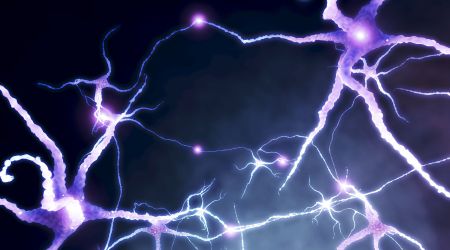A small study has linked the pain of fibromyalgia to small nerve fiber neuropathy, which is painful damage to a certain part of a certain nerve. This could be a ground-breaking study, as fibromyalgia has previously been linked to nerve dysfunction, but not to actual nerve damage.
Researchers examined the small fibers in different areas of the body using three different methods: sensory testing, pain response, and skin biopsy.
They determined that people with fibromyalgia had:
- Impaired small fiber function that lead to increased temperature sensitivity;
- Sensory irregularities in the feet, face, and hands;
- Lower total nerve fibers and fewer regenerating nerve fibers in the skin;
- Fewer unmyelinated nerve fiber bundles in the skin, but normal levels of myelinated nerve fibers.
Researchers concluded that all three testing methods support the idea of impaired small fiber function, and therefore a high likelihood of neuropathic pain, in fibromyalgia.
Understanding the Science
A quick lesson in neurology now, so that these findings make sense to you.
First, look at the picture above. The pink spots are neurons, the cells that make up nerves. The stringy things connecting them are called axons or fibers.
The fibers in the skin, organs, and peripheral nerves are called C fibers or small fibers.
Their job is to provide sensation for your skin and to control autonomic function – all the automatic jobs your body does, like regulating heart rate, breathing, and body temperature. Damage to these nerves is called peripheral neuropathy.
Now let’s look at the final finding listed above: Fewer unmyelinated nerve fiber bundles in the skin, but normal levels of myelinated nerve fibers.
Picture a large electronic cable cut in half. Inside, it contains a bunch of smaller cables that are bundled together and put inside a casing. Small fibers in your body are bundled in a similar way as they travel together away from nerve cells and toward the areas they serve.
Some of those bundles are in a protective casing called myelin, or a myelin sheath. The medical term for a sheathed bundle is myelinated.
Other bundles are “naked” – they don’t get a myelin sheath. It’s these naked, unmyelinated bundles that, according to this study, appear to be damaged in fibromyalgia. That could be an important clue to researchers as they try to uncover the reasons for the damage.
The Relevance
This could be an extremely important avenue of research. Doctors understand neuropathic pain. It’s common in diabetes and as a result of nerve damage. It’s a concrete explanation for our pain, which is currently classified as “poorly understood” or “idiopathic” (meaning without cause.)
Neuropathy in us makes sense. It explains why medications known to improve neuropathy, such as Lyrica (pregabalin), work for some of us. It also explains the nature of our pain and the way it moves around.
It also raises a new question – what is damaging our small fibers?
Is it our immune systems, which would mean fibromyalgia is autoimmune? Do we lack an enzyme that aids in axon growth and repair? Is it a problem with cellular metabolism (mitochondrial dysfunction)?
Let’s hope that researchers start asking those questions and looking for answers, because if it truly is nerve damage – and not just dysfunction – it brings us better credibility along with more concrete targets for treatment.





